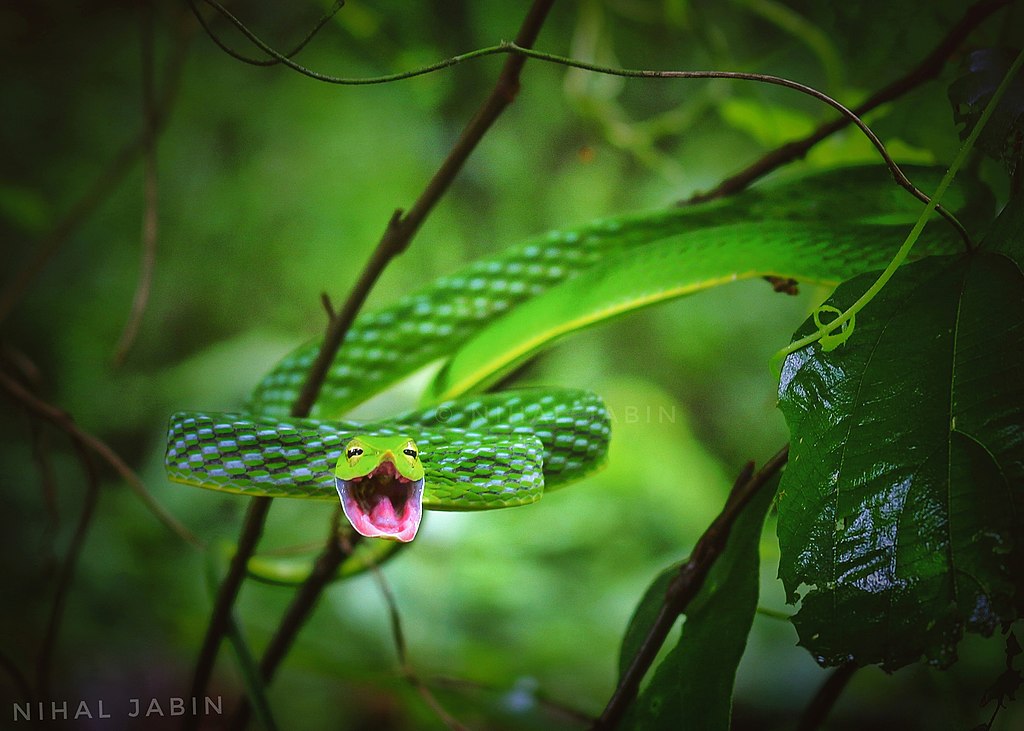In the dappled light of tropical forests across Southeast Asia, a master of disguise slithers almost invisibly across the leaf litter. The aptly named vine snake (Ahaetulla prasina) has evolved one of nature’s most remarkable camouflage techniques—mimicking the shadows cast by leaves on the forest floor. This extraordinary reptile doesn’t merely blend into its surroundings; it becomes a living shadow, disappearing before predators’ and prey’s eyes alike. Through specialized body coloration, unique behavioral adaptations, and an evolutionary journey spanning millions of years, this serpent represents one of nature’s most sophisticated examples of cryptic coloration, challenging our understanding of evolutionary adaptation and survival strategies in competitive forest ecosystems.
The Master of Forest Shadows
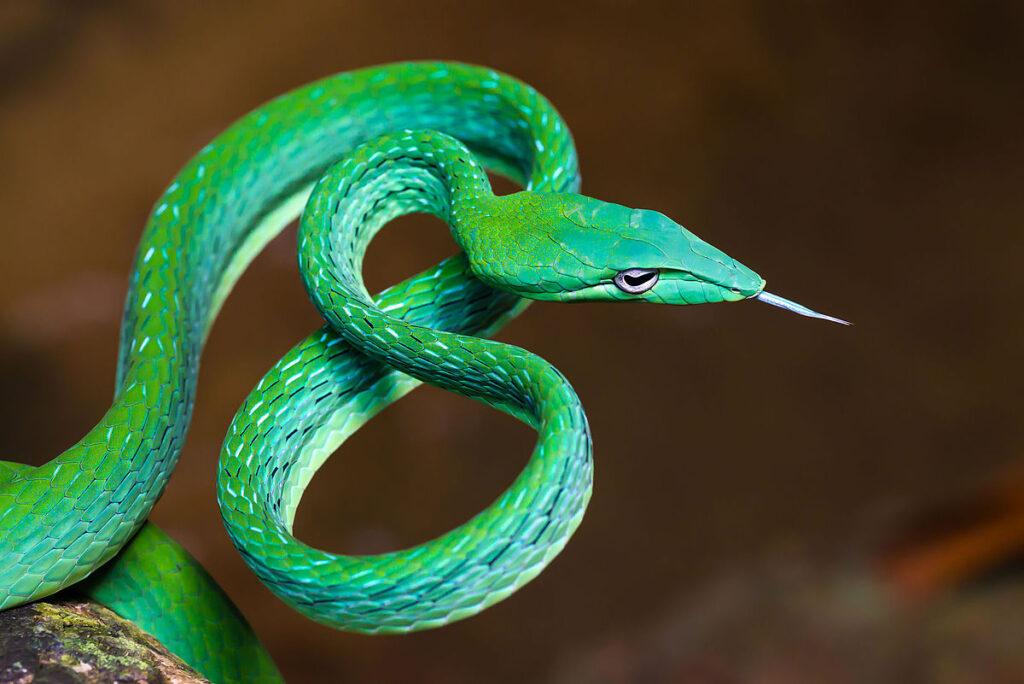
The Asian vine snake (Ahaetulla prasina) has perfected the art of disappearing in plain sight through its remarkable shadow-mimicking adaptation. Unlike many camouflaged animals that simply match background colors, this slender serpent takes disguise to another level by imitating the dark, linear shadows cast by leaves and branches on the forest floor. When sunlight filters through the forest canopy, it creates a complex pattern of light and shadow. Within this mosaic, the vine snake becomes virtually invisible. Its slender, elongated body mimics the thin dark lines of leaf shadows, while its muted green-brown coloration matches the subdued tones of shaded areas. This sophisticated form of cryptic coloration represents one of the most advanced camouflage strategies in the reptile world.
Physical Adaptations for Shadow Mimicry
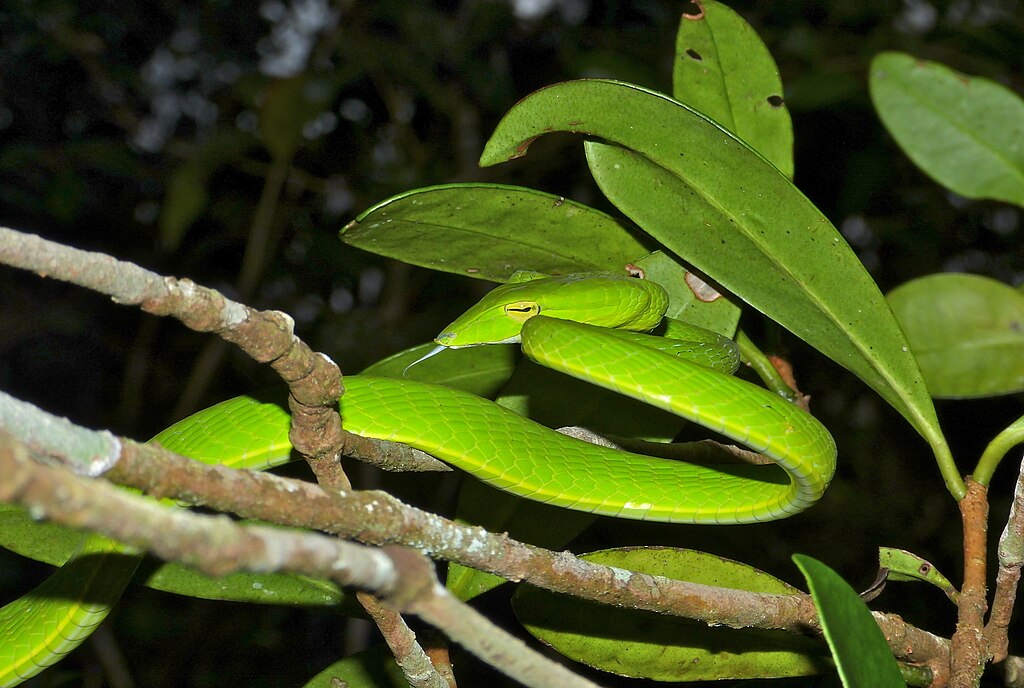
The vine snake’s body is remarkably engineered for its shadow-imitating lifestyle, displaying a suite of physical adaptations that enhance its disguise. Most notably, its extremely slender body, often less than a centimeter in diameter despite reaching lengths of up to two meters, mimics the thin, linear appearance of shadows cast by stems and leaf edges. The snake’s coloration features subtle dark streaks running longitudinally down its body, creating the impression of shadow edges rather than a solid object. Its head is dramatically elongated and pointed, breaking up the typical snake silhouette and further enhancing the shadow illusion. Even the scales contribute to the deception, with slightly keeled surfaces that diffuse light rather than reflect it, preventing unwanted shine that might give away the snake’s position to predators or alert potential prey.
Behavioral Tactics That Enhance the Illusion
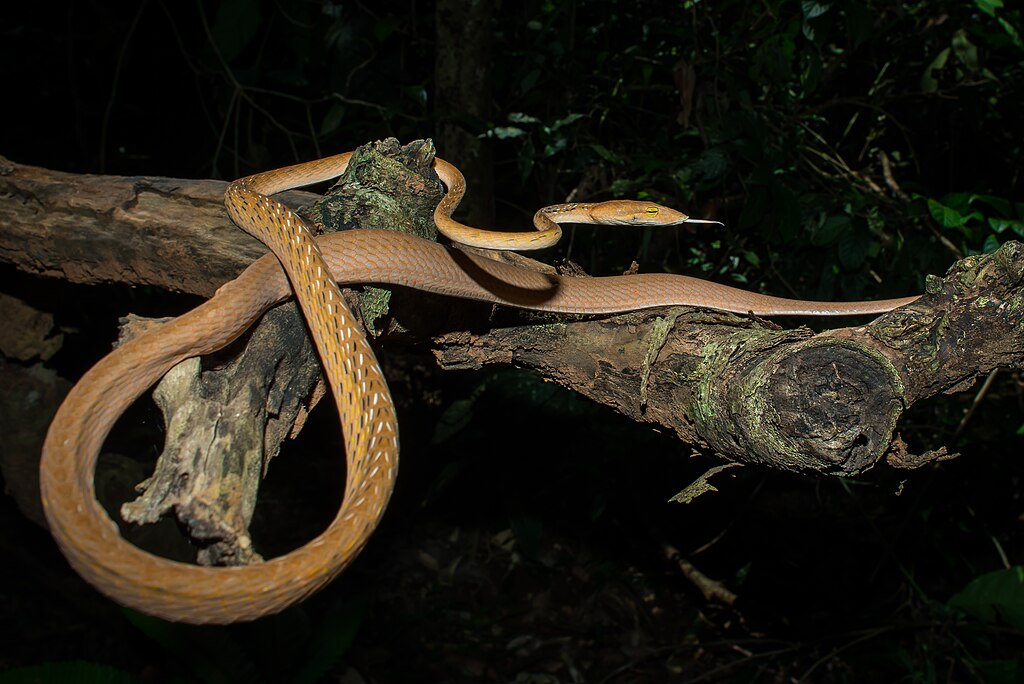
The vine snake’s shadow mimicry extends beyond physical traits into sophisticated behavioral adaptations that complete its deceptive appearance. When hunting or avoiding predators, these snakes deliberately position themselves along natural shadow lines cast by branches and leaves, effectively becoming part of the existing shadow pattern. They move with remarkably slow, deliberate motions that prevent the eye from detecting their presence, sometimes taking minutes to cover just a few inches of ground. When threatened, rather than fleeing rapidly like many snakes, vine snakes often freeze completely, relying on their camouflage rather than speed for protection. Perhaps most impressively, they have been observed adjusting their body position throughout the day as the sun moves and shadow patterns shift, maintaining their disguise as the light conditions change.
Evolutionary Development of Shadow Mimicry

The vine snake’s shadow mimicry represents the culmination of millions of years of evolutionary pressure within forest ecosystems. Scientists believe this specialized form of camouflage developed incrementally through natural selection, beginning with snakes that happened to have slightly more elongated bodies and darker dorsal coloration. These traits would have provided a survival advantage in forest environments, allowing these individuals to reproduce more successfully and pass these genes to their offspring. Over countless generations, this selective pressure refined both the physical appearance and instinctive behaviors that complete the shadow disguise. Fossil evidence suggests that the ancestors of modern vine snakes began developing these adaptations approximately 20 million years ago, coinciding with the expansion of tropical forests across Southeast Asia. The remarkable precision of this mimicry demonstrates how intense predator-prey relationships can drive the evolution of highly specialized adaptations.
Habitat Specialization and Distribution

The vine snake’s shadow-mimicking adaptation is intimately tied to its preferred habitat in the tropical and subtropical forests of Southeast Asia. These snakes are primarily found in countries including Thailand, Malaysia, Indonesia, the Philippines, and parts of India, where they inhabit the middle to lower canopy levels of dense forests. Their distribution closely follows regions with consistent forest cover that provides the dappled light conditions essential for their camouflage strategy to work effectively. Within these forests, vine snakes show a preference for edges and gaps where light penetration creates the most complex shadow patterns. Interestingly, different regional populations have evolved subtle variations in coloration that match the specific light characteristics of their local forest types, with snakes in more open forests typically displaying slightly lighter colorations than those in dense, darker forests.
Hunting Strategies of the Shadow Snake

The vine snake’s shadow mimicry serves a dual purpose, not only protecting it from predators but also making it a devastatingly effective ambush hunter. These snakes are primarily diurnal hunters that target small lizards, frogs, and occasionally small birds that share their arboreal habitat. Their hunting strategy relies on extreme patience and stillness, often remaining motionless along a shadow line for hours while waiting for prey to move within striking distance. When a potential meal approaches, the vine snake extends only its head from its position along a natural shadow, appearing to be nothing more than a shifting shadow to the unsuspecting prey. The strike itself is lightning-fast, with the snake delivering a quick bite that injects mild venom through its rear fangs. After capturing prey, the snake maintains its shadow-like appearance while slowly consuming its meal, ensuring it remains protected even during this vulnerable feeding period.
A Mildly Venomous Threat
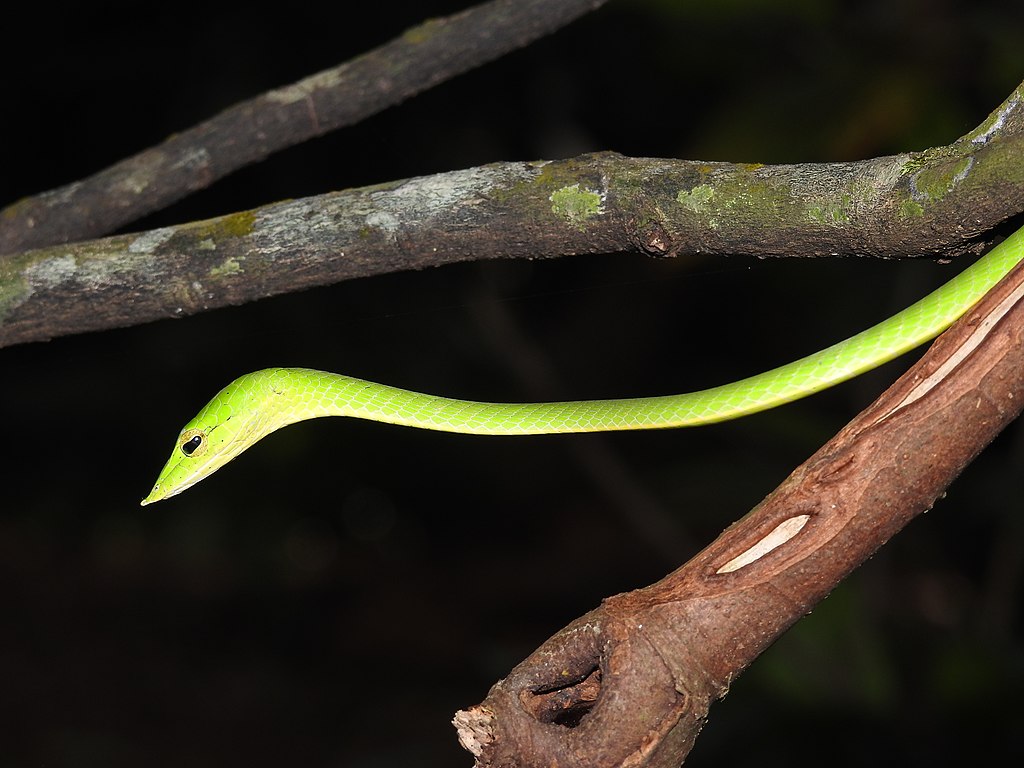
Despite its harmless appearance and non-aggressive nature toward humans, the vine snake possesses specialized rear fangs that deliver a mild venom to subdue its prey. This venom is primarily composed of hemotoxic compounds that affect blood circulation and immobilize small prey animals without killing them instantly. The snake’s venom delivery system is what scientists call opisthoglyphous, meaning it has enlarged, grooved teeth located toward the rear of its upper jaw rather than the hollow fangs at the front that characterize more dangerous venomous snakes. When biting prey, the vine snake must chew slightly to work the venom into the wound, a process that poses little threat to humans but is highly effective against small reptiles and amphibians. While a bite could cause minor swelling and discomfort for humans, serious medical complications are extremely rare, making this one of the few venomous snakes that poses virtually no significant threat to people.
Reproduction and Life Cycle

The reproductive biology of vine snakes reflects adaptations that complement their specialized hunting and camouflage strategies. Unlike many snake species that lay eggs, vine snakes are viviparous, giving birth to live young after a gestation period of approximately three to four months. Females typically produce 4-12 offspring in each breeding cycle, with the young emerging fully formed and equipped with their shadow-mimicking coloration and instinctive behaviors. The birthing process usually occurs during the early rainy season when insect and small prey populations boom, providing abundant food for the vulnerable juveniles. Young vine snakes are independent from birth, measuring about 20-25 centimeters long, and immediately adopt the shadow-mimicking hunting tactics of their parents without requiring any parental care or learning period. Their survival rate is relatively high compared to many reptile species, largely due to their innate camouflage abilities that protect them from predators from their first moments of life.
Scientific Research and Discovery

The vine snake’s remarkable shadow-mimicking abilities have made it a subject of significant scientific interest, particularly in the fields of evolutionary biology and biomimicry. Early naturalists often overlooked these snakes entirely due to their exceptional camouflage, with formal scientific documentation not occurring until the late 18th century when Swedish naturalist Carl Peter Thunberg first described the species. Modern research employs sophisticated techniques, including spectral analysis of the snake’s scales to understand exactly how they diffuse and absorb light, and high-speed cameras to capture their precisely controlled movements. Behavioral ecologists have conducted field studies using experimental manipulations of forest light conditions to demonstrate how these snakes actively select positions that optimize their shadow mimicry. Recent research published in the Journal of Experimental Biology revealed that vine snakes can perceive and respond to changes in shadow patterns with far greater sensitivity than previously thought, suggesting cognitive abilities specifically evolved for their camouflage strategy.
Threats to Survival
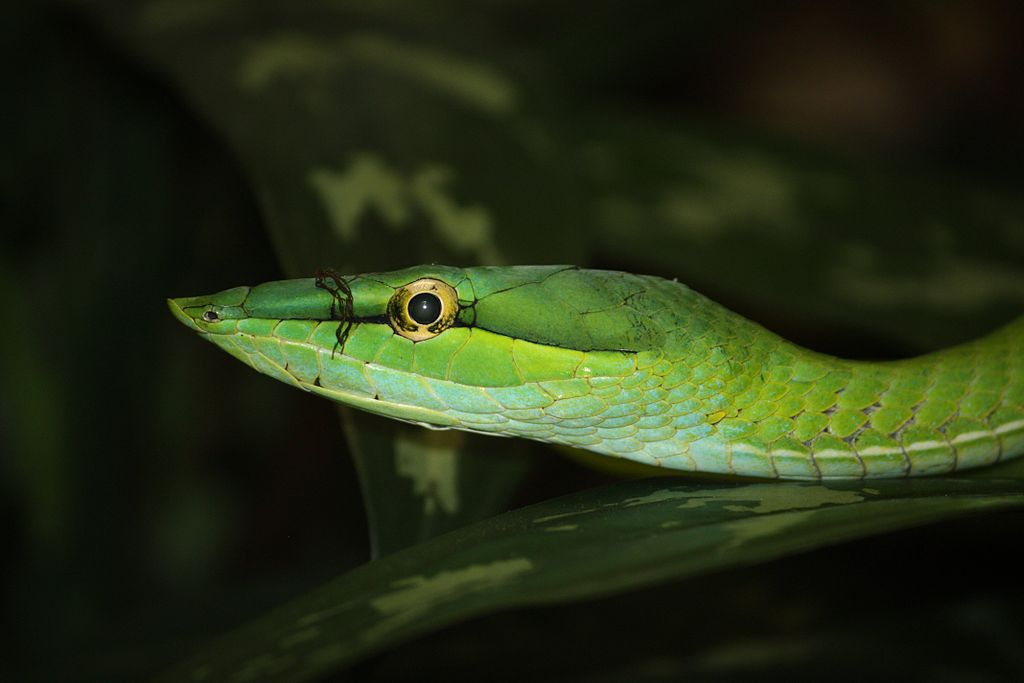
Despite their remarkable adaptations, vine snakes face significant threats that challenge their continued survival in Southeast Asian forests. Habitat destruction represents the most serious concern, with rapid deforestation for agriculture, logging, and urban development fragmenting the contiguous forest habitats these specialized hunters require. When forests are thinned or cleared, the complex light-and-shadow environment essential to their camouflage strategy disappears, leaving them vulnerable to predation and unable to hunt effectively. Climate change poses another threat by altering seasonal patterns of rainfall and temperature that the snakes depend on for timing their reproduction and hunting activities. Additionally, vine snakes are sometimes collected for the exotic pet trade, where their unusual appearance and relatively docile nature make them attractive to collectors. Conservation efforts remain limited for these non-charismatic species, though they benefit indirectly from broader forest protection initiatives throughout their range.
Cultural Significance and Folklore
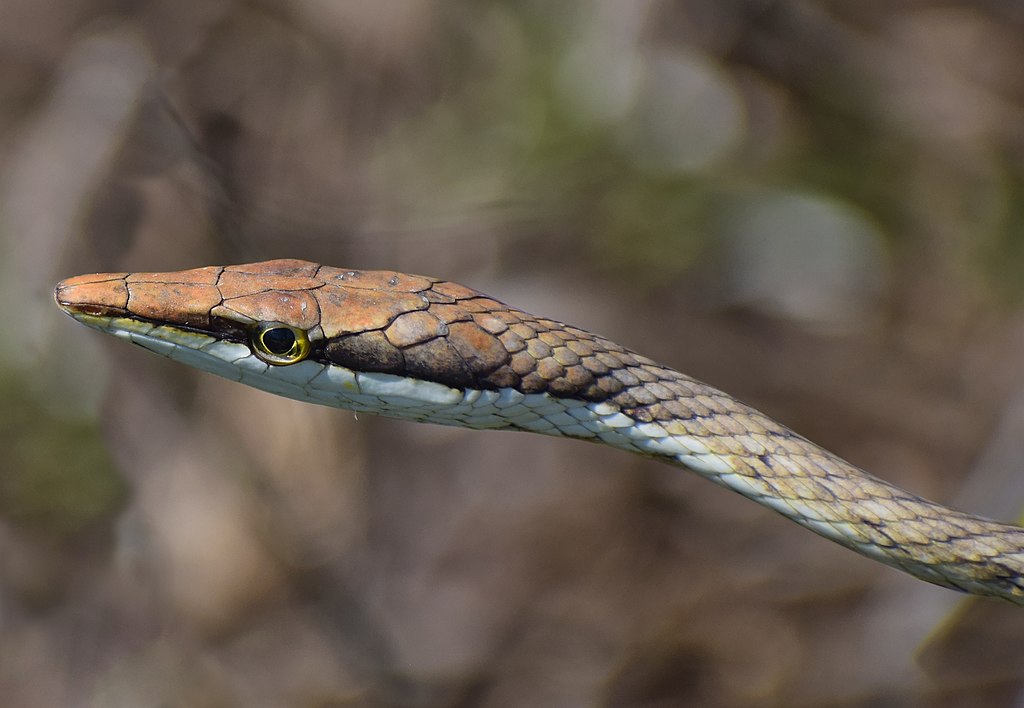
The vine snake’s ethereal, shadow-like presence has inspired cultural beliefs and folklore throughout its range in Southeast Asia. In several traditional Thai and Malaysian communities, these snakes were believed to be manifestations of forest spirits due to their ability to appear and disappear seemingly at will. Some indigenous groups in Borneo traditionally considered sighting a vine snake to be an omen of coming changes, likening the snake’s transformative ability to shift between visibility and invisibility to life’s transitions. In parts of the Philippines, folklore suggests that these snakes can transform into shadows at will, and some traditional stories claim they were once normal snakes that stole shadow powers from spirits. While feared in some regions due to misconceptions about their mild venom, in other areas they were welcomed around homes for their ability to control lizard populations. These cultural associations reflect how deeply the snake’s unique adaptive strategy has impressed human observers across generations.
Conservation Status and Future Prospects
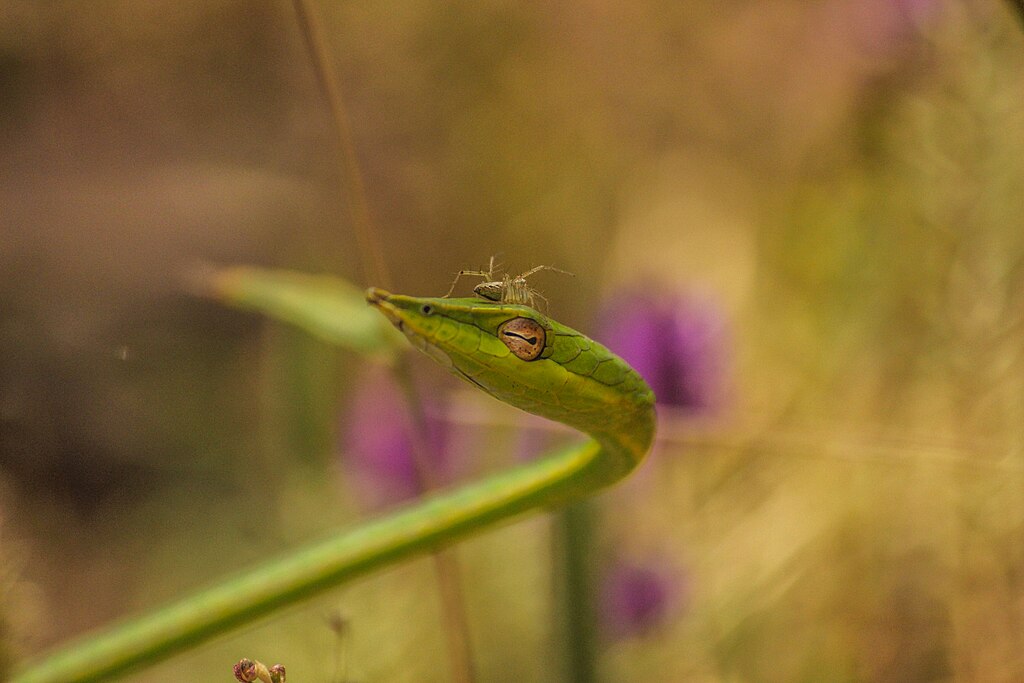
The current conservation status of vine snakes presents a complex picture that varies throughout their range. While not currently listed as threatened on the IUCN Red List, population trends indicate declining numbers in many regions where detailed monitoring has occurred. Conservation biologists express particular concern about fragmented populations in areas where forest corridors have been severed by development, as these snakes appear reluctant to cross non-forested areas that lack the shadow environments they depend on. Several protected areas throughout Southeast Asia harbor significant populations, including Thailand’s Khao Yai National Park and Malaysia’s Taman Negara, providing important refuges. Conservation efforts specifically targeting vine snakes remain limited, though they benefit from broader forest protection initiatives. Some promising conservation approaches include the establishment of forest corridors connecting fragmented habitats and educational programs aimed at reducing fear and persecution of these beneficial and harmless snakes. With adequate habitat protection, the remarkable shadow-mimicking adaptation that has served these snakes for millions of years may continue to evolve and persist well into the future.
The vine snake’s extraordinary ability to mimic leaf shadows represents one of nature’s most sophisticated examples of evolutionary adaptation. Through a combination of specialized body structure, coloration, and behavior, these remarkable reptiles have turned shadow imitation into a survival art form. As we continue to study and understand these masters of disguise, they offer valuable insights into evolutionary processes and the complex relationships between predators, prey, and their shared environments. For those fortunate enough to spot one in the wild—no small feat given their exceptional camouflage—the vine snake serves as a humbling reminder of nature’s endless capacity for innovation and the countless still-undiscovered wonders waiting in the world’s diminishing forests.

